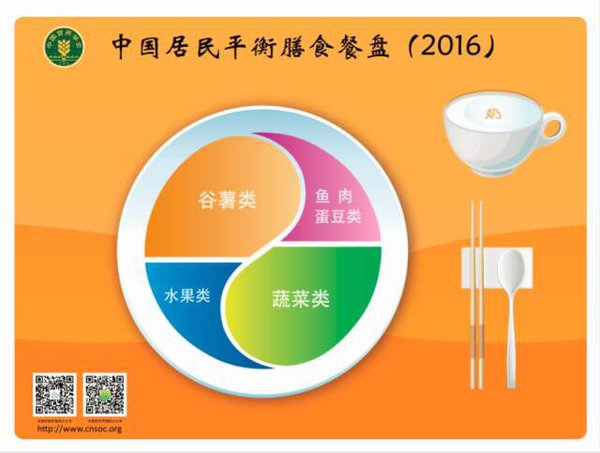(方舟子按:近年来国外医学期刊多次发表国外临床试验结果否定了肖氏手术的有效性。霍普金斯儿童医院最近在美国《神经外科杂志:儿科》发表几年前对肖氏手术做随机双盲对照试验的结果,结论还是:毫无效果,不可用于临床,在做进一步的基础研究和动物实验之前,不应再对肖氏手术做临床试验。这是最新的也是最严格(首次使用对照)的一项研究结果,称得上是肖氏手术的最后一颗棺材钉。《神经外科杂志:儿科》同时发表社论揭露肖传国的底细,以下是该社论的翻译,原题《社论:一个负面研究的正面意义》)
作者:Andrew Jea, MD
贝勒医学院神经外科系、得克萨斯儿童医院儿科神经外科部
2016年5月3日
佛罗里达州圣彼得堡的约翰森·霍普金斯儿童医院Gerald Tuite博士及其同事提交了一项重要的研究结果,证明有争议的肖氏手术——为改善膀胱功能做体神经-自主神经转移——对治疗脊髓脊膜突出或脂性脊髓脊膜膨出的患儿没有效果。该研究代表了不仅在儿科神经外科,而且在普通神经外科都很少见的随机试验。除了表面上报告一项无效的外科手术,Tuite等人的研究还有助于人们了解与临床研究有关的许多其他显著主题,包括伦理、科学不端行为、科学道德,以及“负面”研究的价值,这些与其更明显的主要结果一样有重大影响。我们应该表扬这一重要工作。
肖氏手术获得了来自脊髓脊膜突出/脂性脊髓脊膜膨出患儿家长、儿科医生、泌尿科医生和大众媒体的很多关注。对它的宣扬超出了神经外科领域。但是所有这些宣扬是理所应当的吗?目前这一优秀的研究,以及作者们以前的工作,与此前被广为引用的、报告肖氏手术的有效性与安全性的其他研究结果相冲突。要了解这一研究的背景和明白为何它如此重要,也许有必要多了解一点肖氏手术的发明者的历史。有意思的是,泌尿科医生和自称肖氏手术的发明者肖传国医生本身就是一个两极化的人物。
肖医生于1980年代后期接受国家卫生院的资助在美国工作时,想到了一种用于治疗脊髓脊膜突出、脂性脊髓脊膜膨出或脊髓损伤的患者的新手术。1995年,肖回到中国,做临床研究试图证明其新描述的肖氏手术的有效性。他得益于管理中国庞大医疗保健市场和人体试验的监管环境。通过他自己发表的论文,肖医生声称肖氏手术在恢复膀胱控制方面有70%-90%的成功率。然而这些惊人的结果还没有被中国之外的任何医学中心重复出来。肖医生职业生涯的顶点是开了一家专门用于做肖氏手术的私人医院。那些绝望的外国人,包括美国人,掏腰包去做这种手术,肖传国因此从这种医疗旅游中牟利。不幸的是,他的职业生涯及其人生的剩余部分演得就像一出肥皂剧。2010年,肖医生由于雇凶袭击批评其手术、怀疑其学术信用和揭露其学术造假的人,被指控、逮捕并定罪。
肖医生被判刑五个半月。从那以后,他的声音也许消停了,但是他臭名昭著的遗产还在继续。自从2010年以来,中国有超过250名患者声称肖氏手术无效,威胁要对医院或肖医生本人采取进一步的民事和刑事诉讼。而且,由于其手术涉及牺牲有功能的腹部神经根并进而丧失运动功能,有严重的并发症。
“科学道德”涵盖范围很广的一系列责任,包括制止剽窃、禁止为了先行结论去伪造科学数据(例如将自闭症与疫苗联系起来的研究),要求全盘披露所有可能的偏向(例如研究骨形态发生蛋白的安全性与有效性的最初临床研究,作者未能公布其与一种骨形态发生蛋白制造商的重大财务关系),遏制科学不端行为,以及要求科学医学杂志编委会发表高质量的科学论文。
进一步的,还有很多“付费发表”杂志其同行评议程序的严格程度和质量控制都是可疑的。作者有时需要意识到并接受,他们的工作可能不适合原样发表,需要做进一步的研究工作来完善或证实其结论。必须有一个体系来恰当地监督造假和剽窃,审核合理的指控和起诉诽谤,以及保护揭假者。这事关临床医生和科学家的职业,科学方法的未来,以及更重要的,患者的健康、幸福和生活。
最后,我想简单地评论一下一项“负面”研究的正面作用。作者、编辑和出版人都严重地倾向于只发表报告正面结果的研究,这些研究证实了一个假说,激励了进一步的研究。相反地,很可能有多得多的研究产生的是不能证实或负面的结果,否定了当前的观点或精心构建的假说,比如现在这一研究。这些负面研究——甚至可以说在科学上更有价值——是科学进步的一个组成部分,值得更多的关注。发表负面结果的明显好处包括减少了各研究小组之间的重复工作;揭示了平常使用的方法、药物或试剂的根本错误;加速科学进步周期;弘扬严格、透明和公开的文化,这是科学最高贵的一面。科学的现实是,它是凌乱、复杂、混淆和不完美的;负面研究是科学现实的精髓。著名作家、被视为科幻之父的儒勒·凡尔纳有一句话总结了我对负面研究的想法:“小伙子,科学是由错误组成的,但是犯这些错误是有用的,因为它们一点一点地导向了真理。”
http://thejns.org/doi/full/10.3171/2015.12.PEDS15633
Journal of Neurosurgery: Pediatrics
Posted online on May 3, 2016.
Editorial: The positives of a negative study
Andrew Jea, MD
Division of Pediatric Neurosurgery, Texas Children’s Hospital, and Department of Neurosurgery, Baylor College of Medicine, Houston, Texas
ACCOMPANYING ARTICLE, EDITORIAL, AND RESPONSE DOIs: 10.3171/2015.10.PEDS15271; 10.3171/2015.11.PEDS15623; and 10.3171/2015.12.PEDS15710.
INCLUDE WHEN CITING Published online May 3, 2016; DOI: 10.3171/2015.12.PEDS15633.
Dr. Gerald Tuite and his colleagues at Johns Hopkins All Children’s Hospital in St. Petersburg, Florida, have submitted an important study6 demonstrating the lack of efficacy of the controversial Xiao procedure—a somatic-to-autonomic nerve transfer for improving bladder function—in children with myelomeningocele (MM) or lipomyelomeningocele (LMM). The study represents one of the few prospective randomized trials not only in pediatric neurosurgery, but also in neurosurgery in general. Beyond the surface reporting of an ineffectual surgical procedure, this study by Tuite et al.6 sheds light on many other salient topics related to clinical research, including ethics, scientific misconduct, scientific integrity, and the virtues of a “negative” study, which are just as impactful as its more evident primary outcome. The authors should be commended for this important work.
The Xiao procedure has received much attention from desperate parents of children with MM/LMM, pediatricians, urologists, and the lay press. Its fanfare extends beyond the field of neurosurgery. But was all this fanfare merited? The present well-executed study,6 along with the authors’ prior work,7 contradicts widely cited studies4,5 that were reported to validate the efficacy and safety of the Xiao procedure. Perhaps a little more history about the inventor of the Xiao procedure is needed to put the current study in context and highlight why it is so significant. Interestingly, Dr. Chuan-Guo Xiao, a urologist and founder of the self-named Xiao procedure, is himself a polarizing figure.
Dr. Xiao conceived the idea for an innovative surgical procedure to restore bladder function in patients with MM, LMM, or spinal cord injury while working in the US under a National Institutes of Health grant in the late 1980s. In 1995 Xiao returned to China to perform clinical studies designed to demonstrate the efficacy of his newly described Xiao procedure. He benefited from the regulatory environment that governs China’s large health care market and human experimentation. Through his own publications,8–13 Dr. Xiao claimed a 70%–90% rate of success in restoring bladder control. Yet these astonishing results have not been duplicated by any center outside of China. The zenith of Dr. Xiao’s career was the opening of a private hospital dedicated exclusively to performing this procedure. He capitalized on medical tourism, where despairing foreigners, including Americans, would pay out of pocket to have this procedure performed. Unfortunately, the rest of his professional career and life plays out like a soap opera. In 2010, Dr. Xiao was accused and then arrested and convicted of hiring thugs to attack critics of his procedure, doubters of his academic credentials, and whistleblowers of research fraud and fabrication of data.3
Dr. Xiao was sentenced to five and a half months in prison. Since then, his voice may have been silenced, but his infamous legacy lives on. Since 2010, more than 250 patients in China who claim that the Xiao procedure does not work3 have been threatening further civil and criminal legal action against hospitals or Dr. Xiao directly. Moreover, there have been serious complications related to this procedure involving the sacrifice of functioning ventral nerve roots and subsequent loss of motor function.4–7
“Scientific integrity” encompasses a broad spectrum of responsibility, which includes deterring plagiarism, prohibiting the falsification of scientific data to support a priori conclusions (e.g., studies associating autism with vaccines), requiring full disclosure of all potential areas of bias (e.g., the initial clinical studies investigating the safety and efficacy of bone morphogenetic protein [BMP], for which authors failed to disclose significant financial relationships with the manufacturer of one form of BMP), curtailing scientific misconduct, and the mandate of editorial boards of scientific medical journals to publish high-quality science.2
Furthermore, there are too many “pay-to-publish” journals where the rigor of the peer-review process and quality control is questionable. At times, authors need to realize and accept that their work may not be suitable for publication as composed and that further work to improve or validate the message would be of benefit. A system must be put in place that properly monitors fraud and plagiarism, checks reasonable allegations and prosecutes libelous ones, and protects whistleblowers. The careers of clinicians and scientists, the future of the scientific method, and most importantly, the health, well-being, and lives of our patients are at stake.3
Lastly, I would like to make some brief comments on the positive aspects of a “negative” study. Significant author, editorial, and publisher biases exist toward publishing only studies that report positive results, where a hypothesis is confirmed and further research is inspired. On the contrary, there are likely many more studies that produce nonconfirmatory or negative, observations that refute current ideas or carefully constructed hypotheses, such as the present study.6 These negative studies—arguably even more valuable in science—are an integral part of scientific progress and deserve more focus.1 Obvious benefits of publishing negative results include reductions in duplicated efforts between various research groups; revelations of fundamental flaws in commonly used methods, drugs, or reagents; acceleration of the cycle of scientific progress; and the promotion of a culture of robustness, transparency, and openness, the noblest aspect of science.1 The reality of science is that it is untidy, complex, confusing, and imperfect; negative studies are the essence of the reality of science. A quote by Jules Verne, famed author and ostensibly the father of science fiction, summarizes my thoughts about negative studies: “Science, my lad, is made up of mistakes, but they are mistakes which it is useful to make, because they lead little by little to the truth.”
References
1.Anderson G, Sprott H, Olsen BR: Opinion: publish negative results. The Scientist January152013. (http://www.the-scientist.com/?articles.view/articleNo/33968/title/Opinion–Publish-Negative-Results/) [Accessed February 4, 2016]
2.Barr DB: Integrity in science. J Expo Sci Environ Epidemiol 17:123, 2007 CrossRef
3.Editorial: A hammer blow to national ethics. Nature 467:884, 2010 CrossRef, Medline
4.Peters KM, Gilmer H, Feber K, Girdler BJ, Nantau W, Trock G, et al.: US pilot study of lumbar to sacral nerve rerouting to restore voiding and bowel function in spina bifida: 3-year experience. Adv Urol 2014:863209, 2014 CrossRef, Medline
5.Peters KM, Girdler B, Turzewski C, Trock G, Feber K, Nantau W, et al.: Outcomes of lumbar to sacral nerve rerouting for spina bifida. J Urol 184:702–707, 2010 CrossRef, Medline
6.Tuite GF, Polsky EG, Homsy Y, Reilly MA, Carey CM, Winesett SP, et al.: Lack of efficacy of an intradural somatic-to-autonomic nerve anastomosis (Xiao procedure) for bladder control in children with myelomeningocele and lipomyelomeningocele: results of a prospective, randomized, double-blind study. J Neurosurg Pediatr [epub ahead of print May 3, 2016. DOI: 10.3171/201510.PEDS15271]
7.Tuite GF, Storrs BB, Homsy YL, Gaskill SJ, Polsky EG, Reilly MA, et al.: Attempted bladder reinnervation and creation of a scratch reflex for bladder emptying through a somatic-to-autonomic intradural anastomosis. J Neurosurg Pediatr 12:80–86, 2013 Link
8.Wang HZ, Li SR, Wen C, Xiao CG, Su BY: Morphological changes of cholinergic nerve fibers in the urinary bladder after establishment of artificial somatic-autonomic reflex arc in rats. Neurosci Bull 23:277–281, 2007 CrossRef, Medline
9.Xiao CG: Reinnervation for neurogenic bladder: historic review and introduction of a somatic-autonomic reflex pathway procedure for patients with spinal cord injury or spina bifida. Eur Urol 49:22–29, 2006 CrossRef, Medline
10.Xiao CG, de Groat WC, Godec CJ, Dai C, Xiao Q: “Skin-CNS-bladder” reflex pathway for micturition after spinal cord injury and its underlying mechanisms. J Urol 162:3 Pt 1936–942, 1999 CrossRef, Medline
11.Xiao CG, Du MX, Dai C, Li B, Nitti VW, de Groat WC: An artificial somatic-central nervous system-autonomic reflex pathway for controllable micturition after spinal cord injury: preliminary results in 15 patients. J Urol 170:4 Pt 11237–1241, 2003 CrossRef, Medline
12.Xiao CG, Du MX, Li B, Liu Z, Chen M, Chen ZH, et al.: An artificial somatic-autonomic reflex pathway procedure for bladder control in children with spina bifida. J Urol 173:2112–2116, 2005 CrossRef, Medline
13.Xiao CG, Godec CJ: A possible new reflex pathway for micturition after spinal cord injury. Paraplegia 32:300–307, 1994 CrossRef, Medline

